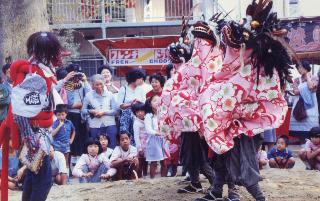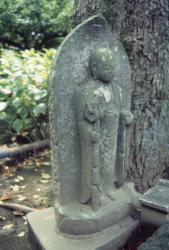Folklore exhibition room
Update date: March 16, 2018
The Folklore Exhibition Room displays Inagi City's annual events, folk tools, local performing arts, stonework,
| Exhibition theme | overview | Exhibition Contents | |
|---|---|---|---|
| 1 | Village life and annual events | Annual event | Annual events held at the farm and folk implements throughout the year |
| 2 | Private house and life | villages and private houses | Models of old folk houses, topographical models of the Sakahama area, etc. |
| 3 | Folk tools in daily life | Folk utensils for food, clothing, and shelter | Folk utensils used in daily life for food, clothing, and shelter |
| 4 | Folk tools used in farming | agricultural tools | Agricultural tools used for rice cultivation, field cultivation, and mountain work |
| 5 | Growing pears in Inagi | Making pears | The history of pear making in Inagi and the folk tools used |
| 6 | Edo no Sato Kagura and local performing arts | Local performing arts | |
| 7 | Stonework and popular beliefs | stonework | |
| 8 | Events and beliefs from snakes | Events from snakes | Snake events and beliefs held at Hyakumura Myokenson |
| 9 | Living with the Tama River | Tama River | Tama River fishing, ferry terminals, types of riverboats, riverboat construction, etc. |
Folklore exhibition room
Folklore of Inagi
Private house and life
In the Inagi city area, life has been centered around agriculture since ancient times. Private houses were built and villages were created taking into account geographical conditions such as hills and flat areas. On display are models of old folk houses from the Edo period in the Sakahama area, as well as models of storehouses and woodsheds. Also on display are topographical models created by researching the old place names and villages in the Sakahama area.
Models of old folk houses, storehouses, and woodsheds from the Edo period
Topographical model of the Sakahama area
Living with folk tools
This exhibit features items used in daily life, such as food, clothing, shelter, and farming tools.
Food, clothing, shelter and farm tools
Folk tools for making pears
Edo no Sato Kagura and local performing arts
Edo no Sato Kagura exhibition

Seii Shrine Lion Dance
Stonework and popular beliefs
Various stone structures built after the Edo period are scattered along old roads and within the grounds of shrines and temples in the city. Representative stone structures include:
Life-size model of stonework

Jizo Bodhisattva Pagoda at Jōrakuji Temple
Events and beliefs from snakes

Snakes and the event
big snake head model
Living with the Tama River
The Tama River around Inagi has been a place where various lifestyles related to the river have been seen since ancient times.
Fishing gear used in the Tama River
Tama River ferry and houseboat (model)
Inquiries regarding this page
Inagi City Education Department Lifelong Learning Division
2111 Higashi-Naganuma, Inagi-shi, Tokyo
Phone: 042-377-2121 Fax: 042-379-0491







